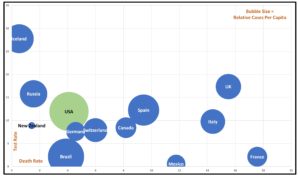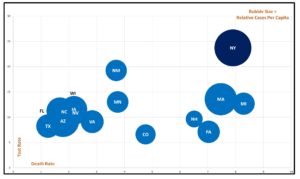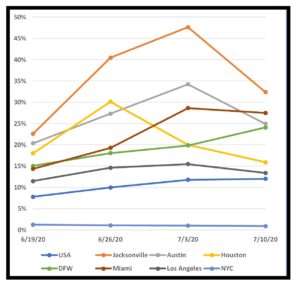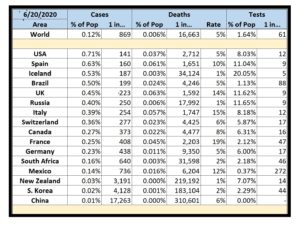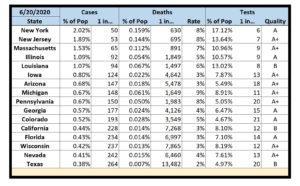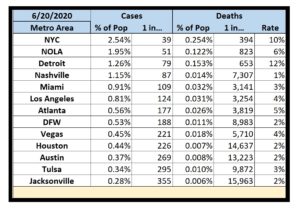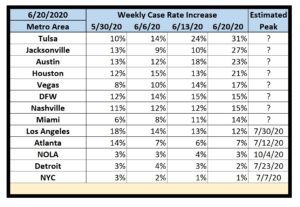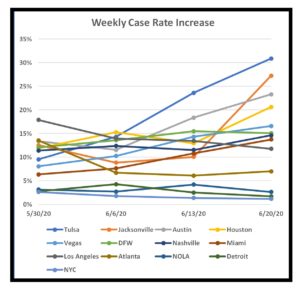As a non-young, middle-class, white male, I hesitated to immediately offer my thoughts on the racially-charged unrest currently sweeping the country. I am certainly in no position to comprehend the perspectives of any black American. I am even more incapable of fully understanding how a young, poor, black person views our shared country.
However, as the author of a political blog, it seems somewhat disingenuous (read: chickenshit) to use that has an excuse to avoid weighing in on an issue that will undoubtedly be a major factor in the 2020 elections.
There are valid conversations to be had with respect to numerous symbols of our racial divide – military bases named after Confederate generals, black portrayals in movies and on television, public displays of Confederate statues and flags, protests related to the American flag, commercial brands that invoke racial stereotypes, and many, many more. While symbols are important and these topics deserve serious discussions, I hope we can also use this moment to focus on the tangible. I find myself specifically drawn to the sparkpoint of the current protests – the role of the police in modern society.
I don’t for a moment believe that all police officers are racists. However, the problem is not simply a few bad actors in a few police departments. Institutionalized racial discrimination is an unfortunate fact of the American police force. The lethal implications of that discrimination have been made painfully apparent. Black Americans are 2.5 times more likely to be killed by the police than white Americans and yet the former are 2 times more likely to be unarmed when killed. The discrimination, however, runs considerably deeper. Here are just a couple of non-lethal examples:
- Numerous studies have shown that marijuana usage is generally race-agnostic – people of every race have comparable usage rates. Cannabis arrests account for almost half of all drug arrests and 90% of those were for possession alone. While these statistics are an independent issue, black people in the U.S. are 3.6 times more likely than white people to be arrested for marijuana possession. In Kentucky, black people are 9.4 times more likely to be arrested. In some predominately white communities, it’s even worse. In Pickens County, Georgia (north of Atlanta, with a 94% white population), black people are 97.2 times more likely to be arrested.
- A recent study in North Carolina revealed that black drivers were stopped 2 times as often and searched 4 times as often as white drivers – despite the fact that white drivers were more likely to be found with contraband. A Stanford University analysis of about 100 million traffic stops nationwide also found that black drivers were more likely to be pulled over than white drivers and additionally found that the disparity was significantly less after dark – when the driver’s skin color was harder to determine.
Other studies tell similar stories. We have a problem.
I am struck by the political battlelines currently being drawn over numerous competing proposals for police reforms by Democrats and Republicans. Rather than dive into the details of these proposals, I’ll simply offer my broad perspective: All of them are little more than band-aids, differing only in the size of the wound they attempt to cover. None of the proposals do much, if anything, to address the root cause of the injury.
At long last, the problem needs to be addressed by more than meaningless rhetoric and politically expedient calls for minor reforms.
While state and local governments will, in our form of government, have final control over their respective police forces, the federal government can and should provide specific guidelines enforced by withholding funding and/or other legal actions were possible.
Below are three fundamental changes that need to be made. Unfortunately, these are by no means new ideas. Versions have been proposed numerous times over the course of decades but there has never been the political will to implement them in the face of entrenched resistance. I hope that now is the time.
Redefine the Role of the Police
The “Defund the Police” movement isn’t nearly as ominous as it sounds. While there are numerous definitions, no sane person is proposing that all police departments be immediately shut down. Few want a real-life version of “The Purge”. The movie was bad enough.
That said, the solution is also not a simple “reform” of existing police structures and policies.
As a society, we have assigned way too many tasks to our police departments. They are not only responsible for addressing serious crimes; they are tasked with handling issues related to homelessness, truancy, family disputes, mental health, substance abuse, immigration, traffic control, crowd control, minor drug violations, etc. If we merely step back for a moment, the insanity of that approach is obvious. We do need a police function; we don’t need it to be – nor should we expect it to be – an enforcer and arbiter of everything imaginable. An all-powerful police force is not only an open invitation to institutionalized racial discrimination. It’s also just a bad idea.
The basic concept of a role redefinition is to redirect a portion of the money currently allocated to police departments to other organizations and programs that are better suited to handle a specific job. The responsibility would transfer with the money. This serves two purposes. First, we’d have specific issues dealt with by people appropriately trained and equipped to handle those issues. Second, we’d decentralize the raw power that society has forfeited to the police over time.
I’d fully suspect that many police officers would welcome the opportunity to focus. Few reasonable people want to be responsible for things they aren’t properly trained to handle.
On the other hand, there will undoubtedly be some police departments, individual police officers, and police unions that will be extremely resistant to any changes that diminish their current powers. In extreme cases, yes, whole departments or agencies may need to be abolished and rebuilt from scratch by the communities they serve. In those cases, the solution is still not an elimination of the police function; it is a replacement of a dysfunctional department with one that meets the needs of its constituents.
Redefine the Police Officer
We can’t simply change the definition of the police department and claim victory. We also need to change the job requirements for the people in those departments.
In general, the professional police officer is fairly well compensated for a job that, frankly, comes with pretty minimal requirements.
For example, to become an Austin police officer, candidates must be a U.S. citizen, have a valid driver’s license, meet physical and health requirements, have a clean criminal history, have responsible driving & financial records, and attend a 32-week training academy. During academy training, they are paid an annual salary of about $50K. Immediately after graduation, they make about $60K and progress to at least $98K after 16 years on the force. High ranking officers can make up to $155K. All ranks can make more if they have college degrees and there are numerous incentive pay options, including overtime pay. After 23 years, officers can retire with 74% of their salary and that increases to 96% at 30 years. In addition, the APD has generous health, life, and disability insurance plans.
In all, the above is a pretty decent deal. I don’t want to turn this post into a career analysis, but I’ll note that a licensed massage therapist is required to have about the same amount of training and that teacher certification requires substantially more training. Neither comes with the employment package of a police officer. While I don’t begrudge the police their compensation, I do think that it should necessarily come with a set of very high expectations.
The fundamental requirement must be for a professional police officer to earn and continually pursue the trust of the people they serve. That trust cannot be conveyed by the mere presence of a badge and a gun. Numerous other professionals understand that dealing with uncooperative people is an occupational hazard. Successful massage therapists, teachers, bartenders, Uber drivers, flight attendants, and hotel staff have developed the necessary skills to handle such people without the use of weapons or deadly chokeholds. It’s really not too much to expect the same from a police officer. We need more Andy Taylors and less Harry Callahans.
Most importantly, police officers need to be held organizationally accountable against clear rules of engagement. While such accountability should be swift and sure, it has unfortunately been quite rare. As just one example of many, Derek Chauvin – the Minneapolis policeman charged with killing George Floyd – had a history of 17 prior misconduct complaints but was disciplined only once. Over the past decade, Minneapolis had over 2600 misconduct complaints filed against individual police officers but only 12 resulted in any punishment at all – the most severe of which was a one-week suspension.
The current implementation of qualified immunity – where police officers are largely exempt from civil lawsuits – also needs to be seriously curtailed. While the police should perhaps be shielded from nuisance lawsuits, they shouldn’t simply get a pass in civil courts.
Police officers are no less entitled to due process than any other citizen. They are not, however, entitled to special treatment under the law. If anything, they should be held to an even higher standard.
Demilitarize the Police
Both political parties have historically shown little resistance to arming police departments with weapons of war – including armored vehicles, weaponized aircraft, grenade launchers, M-16 assault rifles, sniper rifles, combat gear, and tear gas. A byproduct of giving people hammers is the danger that they start to think of everything as a nail. Worse, from an outside perspective, a police force that is dressed in full riot gear and armed for combat naturally projects to the community they serve that they’re preparing for battle in a war zone. While the police in wealthy, white communities remain largely out of sight if not responding to a specific issue, the police in poor, black communities are often seen as an occupying force. That’s simply not conducive to building an atmosphere of trust.
Except in extreme cases, there is no reason for the police to function as a quasi-military force nor for individual police officers to be as well-armed as a soldier in combat. In those cases, use of the National Guard should be the first consideration. While an extremely elite, well-trained police unit might sometimes be appropriate, that’s not what we have. Entrance into U.S. Military Special Forces is extraordinarily competitive and requires about a year and a half of very intense training with a 70% attrition rate. Members are subject to a military court martial if they fail to strictly follow established rules of engagement. On the other hand, while anyone with three years on many police forces can apply for a 19-week SWAT training course, even that training isn’t generally required to gain full access to military weapons.
Use of such weapons against American citizens on American soil should be exceptionally rare and should require considerable senior oversight. Indeed, the use of tear gas on peaceful citizens protesting the death of a man whose last words were “I can’t breathe” is well beyond ironic. It’s inexcusable.
___
None of these changes will happen overnight. It just seems like an excellent time to start.
